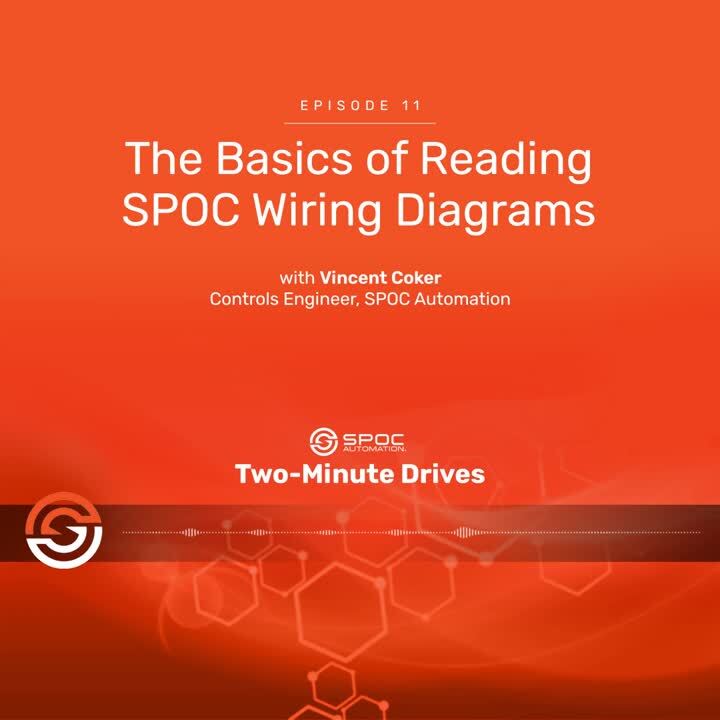
ZayEaZAky3SjTBmUo12ZaS
Transcript
Hello, my name is Vincent Coker and I am a Controls Engineer with SPOC Automation. I have more than 13 years of experience in the electrical and automation field. Today I’d like to talk to you about the basics of reading SPOC wiring diagrams. A really cool thing we do is we actually take the wiring diagrams, print them on labels and apply them to the inside of the units. This way they don’t get lost or damaged. So, let’s get into it and take a look at an example.
This is one of our ESP active front-end (AFE) projects, page one. To the left, you’ll see we use line numbers for reference. This is how we get from one page to the next. This page includes all of the available AC-power connections. Let’s take a closer look at page one. Here is where we find our incoming or utility power connection.
As well as our breaker and/or fuse sizes. As well as our motor connection. Here’s a look at Page 2.
On the left side of page two, we have our drive IO connections. Here we have two (2) drive analog inputs, and a single analog output, our hand-off auto (HOA) switch wiring, our drive relay output connections, which are Form C contacts. We also have the drive comm card, and in this case, additional relay outputs which are also Form C contacts.
On the right side of page two we have our 120VAC transformer and fuse sizes, our heater circuits for our WiseGuy and the drive and our 120v AC controls. They can all be found here.
On page 3, on the left-hand side, we start out with our 24VDC power supply and fuse. As well as all of our 24VDC controls. This includes all your field interlocks, field kill, and your remote runs, as well as ethernet switch and wiring.
On the right-hand side, we have our WiseGuy wiring, our drive status-light connections, as well as our drive option card, which monitors our interlocks. It’s worth mentioning that if you have an analog WiseGuy, you will also find all of the IO connections right here.
Here’s a look at Page 4. In this case, we have additional drive option cards and AFE controls that we use to manipulate our pre-charge contactor, LCL contactor, and our main contactor. But it’s also worth mentioning that any additional remote IO we have will be found on page 4.
I hope you found this presentation informative. And as always, if you have any questions, please feel free to give us a call. Thanks.



